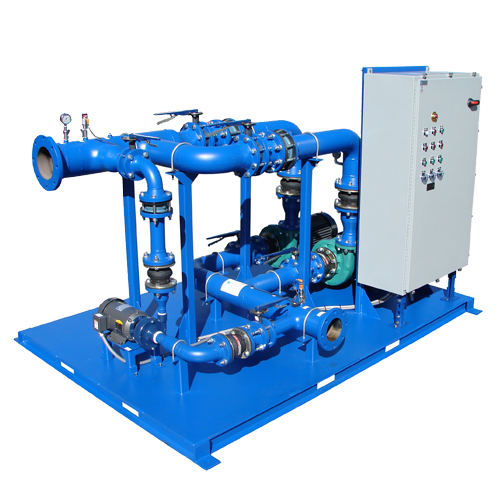Pump skid systems or packaged pump skids generally consist of a pump and a driver mounted on a steel base. They’re often assembled by the manufacturers, but if a buyer wishes they can buy the components and assemble the system themselves.
Read on to see more details of the pump skid system, including its components, its industrial application, and the advantages of using one.
What is a Pump Skid?
A pump skid is a system that consists of a pump; most often a centrifugal pump, and a driver which can either be a diesel engine or an electric motor. It handles applications like fire suppression, chemical dispensing, water pumping, and metering processes.
Supported on I-beams, it has electrical panels used for controlling the motor. It’s also typically piped for the medium it’s intended to pump and the necessary electrical and signal processing.
Components of Pump Skid
The specific components of a pump skid system depend on the specific industry and their needs.
The following are some of the main components that you will find in pump skids in general, as well as their specific purposes.
The Pump
A pump is used to move the fluids in the process from one place to the other through mechanical action. Pumps come in different sizes, and they dictate the flow rate. The capacity helps one know the maximum flow rate possible to achieve. Measured in gallons per hour or GPH, this helps you get the right size to attain maximum performance. If dealing with a fluid that has a high viscosity, heat, or a significantly abrasive nature, it’s better to get an oversized pump as this will help to get the required flow rate.
The Driver
The driver or engine of a pump skid is the power behind the system and the method that’s used to move the fluid from one point to another.
There are a few drivers that you may choose from and they include:
- Three-phase alternating current motors, which are powered by electricity and have different rotational speeds.
- Steam turbines, ideal for large gas pumps with boilers and which need to drive large pumps.
- Hydraulic and expansion turbines, which are mostly used in high-pressure process streams to recover the pressure that’s reduced for further processing.
- Gas turbines, a popular replacement for steam-powered turbines and great for large pump drives with minimal operator attendance.
- Internal combustion engines, ideal for situations in which there’s no alternative power source or it’s necessary to have a standby energy source.
A Piping Network
This needs to be designed with the overall process in mind for it to work effectively and help avoid repeated and premature failure. The suction piping should be short, and there should not be elbows on or close to the pump’s inlet nozzle.
The Frame
The Frame supports the entire system and works best when it is industrial powder coated and fabricated out of steel. It supports the whole system while it works for maximum safety and efficiency.
Resource: https://sodimate-inc.com/the-pump-skid-system/


